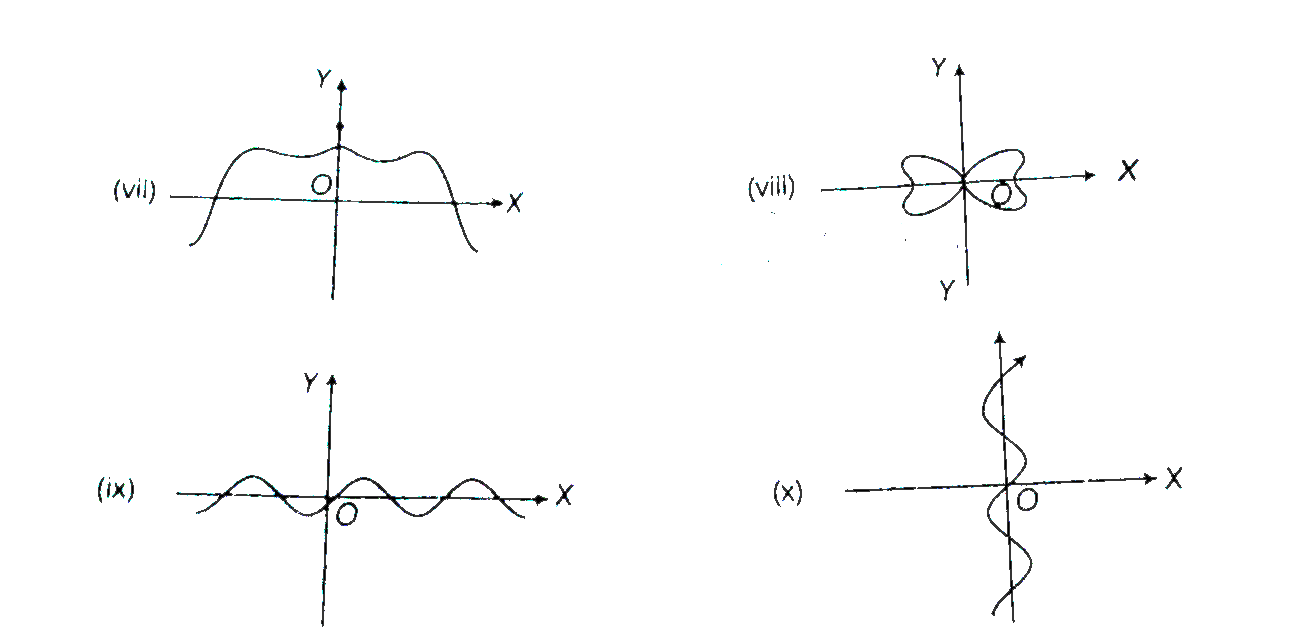If f:[1,∞)→[2,∞) is given by f(x)=x+1x, find f−1(x) (assume bijection).Solution in Punjabi
The correct Answer is:f−1(x)=x+√x2−42
Step by step video & image solution for If f:[1, infty) rarr [2, infty) is given by f(x)=x+1/x," find " f^(-1)(x) (assume bijection). by Maths experts to help you in doubts & scoring excellent marks in Class 12 exams.
Updated on:21/07/2023Topper's Solved these Questions
- FUNCTIONSBOOK - ARIHANT MATHSCHAPTER - FUNCTIONSEXERCISE - Exercise For Session 1
5 Videos
- FUNCTIONSBOOK - ARIHANT MATHSCHAPTER - FUNCTIONSEXERCISE - Exercise For Session 2
6 Videos
- ESSENTIAL MATHEMATICAL TOOLS BOOK - ARIHANT MATHSCHAPTER - ESSENTIAL MATHEMATICAL TOOLS EXERCISE - Exercise (Single Integer Answer Type Questions)
3 Videos
- GRAPHICAL TRANSFORMATIONSBOOK - ARIHANT MATHSCHAPTER - GRAPHICAL TRANSFORMATIONSEXERCISE - Exercise (Questions Asked In Previous 13 Years Exam)
10 Videos
Similar Questions
Which of the following graphs are graphs of a function?


View SolutionThe domain of the function
f(x)=√x2−5x+6+√2x+8−x2 , is
View SolutionThe number of solutions of the equation |x−1|−|2x−5|=2x
View SolutionFind the number of solutions of the equation x21−|x−2|=1, graphically.
View SolutionIf f:[1,∞)→[2,∞] is given by f(x)=x+1x, find f−1(x) (assume bijection).
View SolutionIf the function f:[1,∞)→[1,∞) is defined by f(x)=2x(x−1), then find f−1(x).
View SolutionIf f:[0,∞)→[0,∞) and f(x)=x1+x, then f is
View SolutionIf f:[1,∞)→[2,∞) is given by f(x)=x+1x, then f−1(x) equals
View SolutionConsider f:[3,∞)→[1,∞) given by
f(x)=x2−6x+10. Find f−1
View SolutionIf f:[1,∞)→[2,∞), defined by f(x)=x+1x, then find f−1(x).
View SolutionIf f:[1,∞)→[2,∞) is given by f(x)=x+1x, then f−1(x)=
View SolutionIf f:[1,∞)→[1,∞) is defined by f(x)=2x(x+1) then f−1(x)=
View SolutionIf f:[1,∞)→[2,∞] is given by f(x)=x+1x, find f−1(x) (assume bijection).
View SolutionIf f:[0,∞)→[0,∞) and f(x)=x1+x, then f is
View SolutionIf f:[1,∞)→[2,∞) is defined as f(x)=x+(1x) then find f−1(x)
View SolutionLet f : (−∞,1]→(−∞,1] such that f(x) = x(2 -x), then f−1(x) is
View Solution
